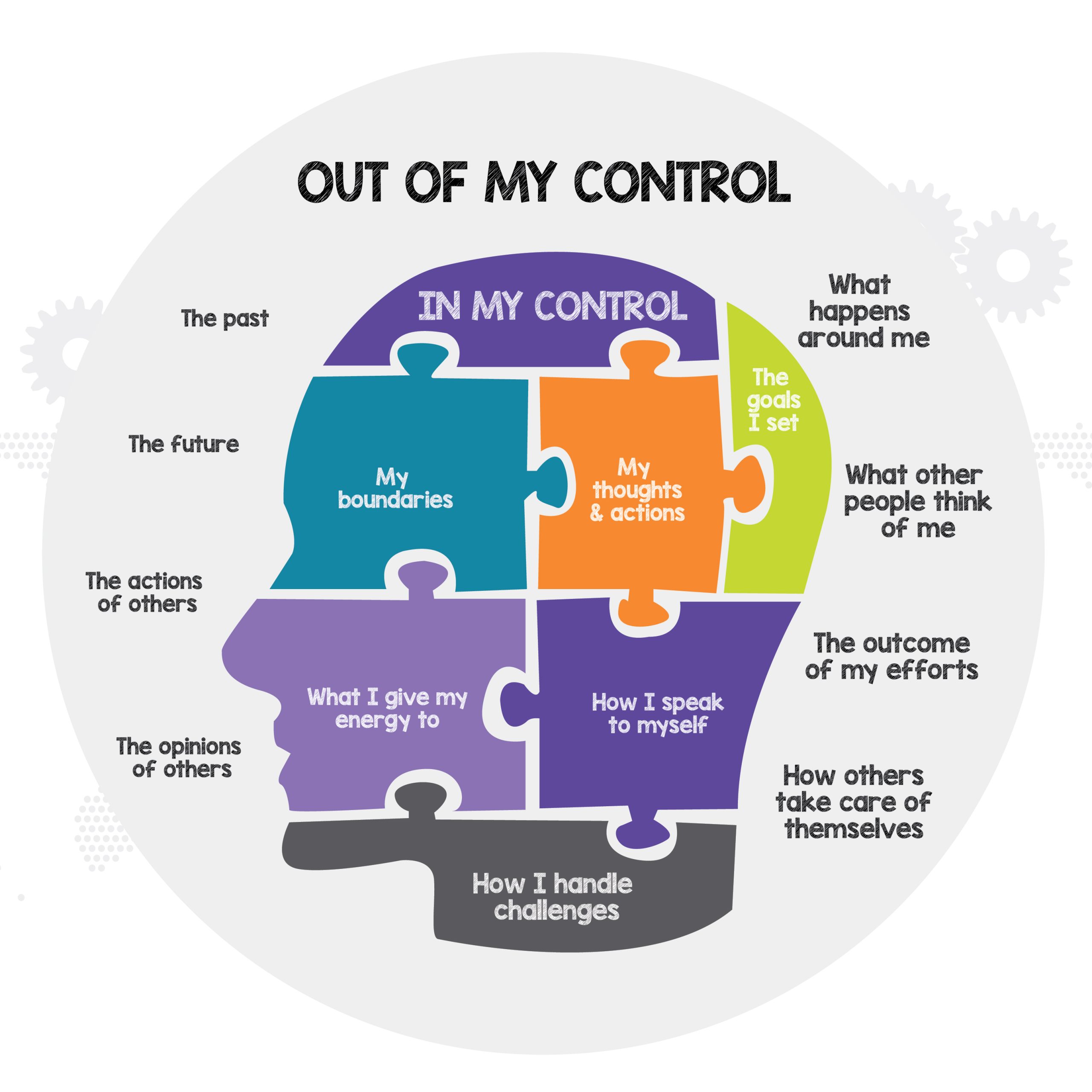Your mindset and your circle of control
Are you battered by the news on a daily basis – does it sap your energy and enthusiasm? Trump and Biden, Putin and Navalny, Israel and Gaza, and AI good or bad? It’s depressing!
My daughter, when she was a teenager, used to talk a lot about people who were “drainers” and others that were “radiators”. The news, without doubt, is a “drainer”.
I think (you may have a different opinion obviously) that, as owners and managers, we need to treat our mindsets with the utmost care and attention, but what does this mean, and how do we do it, and what are the tools to help us?
Some of the best advice was probably given to you by your mother, or your grandmother, and that is the serenity prayer:
“God, grant me the serenity to accept the things I cannot change, the courage to change the things I can, and the wisdom to know the difference”.
… But how do you put that into action, how do you make it tangible?
Well, how about using the Royal Air Force roundels? Or the back of your Parka if you were ever a mod! Three concentric circles. Let’s examine them.
The outside circle: The circle of concern
The outside circle is the circle of concern and would include everything that you have absolutely no influence over; Trump and Biden, Putin and Navalny, Israel and Gaza, and AI good or bad?, government policy, inflation rates, the weather. But also things deeply meaningful and internal to us; your previous decisions, the past, the future, the actions and opinions of others, where you were born, your family and to some extent your health – you have little control over your genetic make-up.
In the circle of concern there may be things that you need to mitigate against or more positively even exploit, but the thing is you can’t control them. From a management system perspective, these are the things that should perhaps be addressed as part of your “context”.
The middle circle – the circle of influence
Clearly, as an entrepreneur owner or manager, you can’t control everything around you, but you may have influence over many things.
You can’t control over when that new hot prospect becomes your latest cool customer, but you can influence it by having a slick sales and follow up process.
You can’t control the response you get to your latest recruitment drive, but you can influence it by developing a great employer brand and having processes that quickly and easily remove the tyre kickers and time wasters.
You can’t have direct control over how satisfied your customers are, but you can influence that by providing excellent products and services delivered by excellent internal processes.
On the same basis, you can’t ensure your biggest customer doesn’t defect, but you can ensure you have top notch processes for collecting feedback on client satisfaction and you can ensure that you take action as a result of that feedback.
We have a number of blogs on each of the above, and a whole lot more, so check out the word cloud on the right of the blog page, or if the above are issues, check out:
- Sales – The 5-Ways blog
- Recruitment – The Tempting Talent blog
- Processes – The making processes deliver blog
- Customer satisfaction – The customer feedback blog
Some of these things you can influence and others you can control, and it’s extremely useful to know, and possibly more importantly to think about, the difference.
The inner circle – the circle of control
Let’s return to mindset and the inner circle of control. The things that you can control begin with the actions you take and the mindset you set yourself. You can control your words, your thoughts, your mood, your (current) decisions, your responses, your behaviours, your attitude, your productivity, your work ethic. and how you treat others – the list is long.
You are not Pavlov’s dog and there is a gap between stimulus and response. Instead of being dragged down by the news and depressing external events, and instead of doom scrolling through your favourite app behind which sit 3000 psychologists with the sole focus of keeping your attention, think instead about what you can control, what you can influence; read a book, check out a TED talk, listen to one of your favourite uplifting songs…even sing one… begin to take control.
Conclusion
As Stephen Bartlett said recently in a LinkedIn post “No amount of anxiety will change your future and no amount of regret can change your past”.
The concept of the circle of control can be used to help us stop worrying about the things that we cannot control and therefore direct and spend our (limited) time and energy on the things that we can.
As a leader, you need to protect both yourself and your team from the outside world, you need to pay attention to where your head, and the head of your team, is at. Clearly, we can’t ignore the outside world completely, but we can put things into perspective, from things that we learned from our mothers and from the words of ancient Chinese masters living many centuries ago:
“Watch your thoughts, they become your words; watch your words, they become your actions; watch your actions, they become your habits; watch your habits, they become your character; watch your character, it becomes your destiny”
Lao Tzu
Related tools and ideas
Recommended references
- Marco Soares on the Circle of Control
Downloadable resources
- None



Comments are closed